Long Sleeve Fashion Shirt Under Dress With Cap-sleeve

Actress Mabel Love in an outfit with leg-o'-mutton (gigot) sleeves in 1919
A sleeve (Onetime English: slīef , a word allied to sideslip, cf. Dutch sloof ) is the part of a garment that covers the arm, or through which the arm passes or slips.
The sleeve is a characteristic of fashion seen in most every country and fourth dimension period, across a myriad of styles of dress. Styles vary from shut-fitting to the arm, to relatively unfitted and broad sleeves, some with extremely wide cuffs. Long, hanging sleeves have been used variously as a type of pocket, from which the phrase "to have upward i's sleeve" (to have something concealed prepare to produce) comes. There are many other proverbial and metaphorical expressions associated with the sleeve, such as "to wear one's center upon one'south sleeve", and "to laugh in one's sleeve".
Early on Western medieval sleeves were cut straight, and underarm triangle-shaped gussets were used to provide ease of movement. In the 14th century, the rounded sleeve cap was invented, allowing a more fitted sleeve to be inserted, with ease effectually the sleeve head and a wider cutting at the back allowing for wider motion. Throughout the 19th century and peculiarly during the Victorian era in Western civilization, the sleeves on women's clothes at times became extremely wide, rounded or otherwise gathered and 'puffy', necessitating the need for sleeve supports worn within a garment to support the shape of the sleeve.[1] Various early on styles of Western sleeve are still found in types of academic dress or other robes, such as ecumenical dress.
Sleeve length varies in modern times from barely over the shoulder (cap sleeve) to flooring-length (as seen in the Japanese furisode ). Nigh gimmicky shirt sleeves end somewhere between the mid-upper arm and the wrist.
History [edit]
Eye Ages [edit]
The medieval sleeve or set-in sleeve was dissimilar modernistic techniques. The seam for this blazon of sleeve was usually placed at the back of the arm, and fit under the arm.[2]
Types of sleeves [edit]
Often the names applied to sleeves in historical costume are modern.
| Type | Brief description | Image |
|---|---|---|
| Angel sleeve | A long wide sleeve that unremarkably hangs loose from the shoulder | |
| Batwing sleeve | A long sleeve with a deep armhole, tapering toward the wrist. Likewise known as a "magyar" sleeve |  |
| Bell sleeve | A long sleeve fitted from the shoulder to elbow and gently flared from elbow onward | |
| Bishop sleeve | A long sleeve, fuller at the bottom than the top, and gathered into a cuff | 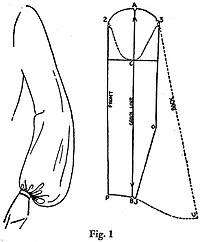 |
| Butterfly sleeve | Usually found on Filipiniana, the national costume for women of the Philippines, and dresses or formal blouses that start at the shoulder and get wider toward the end of the sleeve but usually exercise not go longer than 4–v inches. The departure between a butterfly sleeve and a bell sleeve is that butterfly sleeves usually practice not go completely effectually the full arm.[ commendation needed ] | |
| Cap sleeve | A very short sleeve covering but the shoulder, not extending below armpit level, usually worn by women |  |
| Common cold shoulder sleeve | A long sleeve that is disconnected past the stitching on pinnacle of the shoulder, but not underneath, where the armpit is. The top of the bicep is exposed. | |
| Dolman sleeve | A long sleeve that is very wide at the tiptop and narrow at the wrist | |
| Fitted betoken sleeve | A sleeve that is long and narrow and ends in a point resting against the back of the mitt | |
| Gigot or leg-o'-mutton sleeve | A sleeve that is extremely wide over the upper arm and narrow from the elbow to the wrist |  |
| Hanging sleeve | A sleeve that opens down the side or front end, or at the elbow, to allow the arm to laissez passer through (14th, 15th, 16th, 17th centuries) | 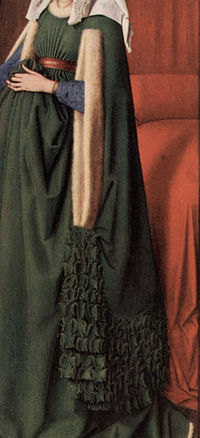 |
| Juliet sleeve | A long, tight sleeve with a puff at the superlative, inspired by fashions of the Italian Renaissance and named subsequently Shakespeare's tragic heroine; pop from the Empire period through the 1820s in fashion, again in the late 1960s nether the influence of Zeffirelli's film Romeo and Juliet |  |
| Kimono sleeve | A sleeve cut in one with the bodice in a wide sloping shape, similar to that on traditional Chinese robes (non Japanese kimono, whose sleeves are sewn separately) | 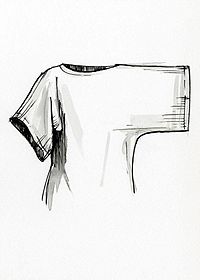 |
| Lantern sleeve | Full, gathered sleeve where the elevation part of the sleeve is apparently and the cuff balloons out halfway betwixt wrist and elbow | |
| Pagoda sleeve | A wide, bell-shaped sleeve pop in the 1860s, worn over an engageante or false undersleeve |  |
| Paned sleeve | A sleeve made in panes or panels, allowing a lining or shirt-sleeve to bear witness through (16th and 17th centuries) | 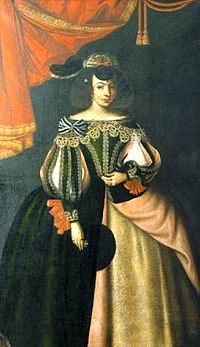 |
| petal or tulip sleeve | A sleeve that has one curved overlapping seam, resembling the petals of a tulip. | |
| Poet sleeve | A long sleeve fitted from shoulder to elbow and then flared (somewhat dramatically) from elbow to wrist (or sometimes mid-hand). Often features ruffles on the cuffs |  |
| Puffed or puff sleeve | A brusk, ¾ length or full sleeve that is gathered at the top and bottom, at present near oft seen on hymeneals and children's clothing |  |
| Raglan sleeve | A sleeve that extends to the neckline allowing easier move | 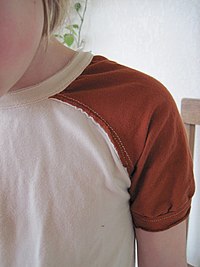 |
| Set-in sleeve | A sleeve sewn into an armhole (armscye) - too known as a "Drop Sleeve" |  |
| Two-piece sleeve | A sleeve cut in two pieces, inner and outer, to allow the sleeve to accept a slight 50 shape to suit the natural bend at the elbow without wrinkling; used in tailored garments | |
| Virago sleeve | A full "paned" or "pansied" sleeve gathered into two puffs past a ribbon or textile ring above the elbow, worn in the 1620s and 1630s |  |
| Wizard'southward sleeve | A sleeve that extends from the shoulder to wrist expanding in a conical shape, draping openly off the wrist | |
| 1/4-length sleeve or quarter-length sleeve | A sleeve that extends from the shoulder to midway down the biceps and triceps expanse. |  |
| ¾ length sleeve or three-quarter length sleeve | A sleeve that extends from the shoulder to a length midway between the elbow and the wrist. Information technology was common in the United States in the 1950s and again in the 21st century. | |
See besides [edit]
- Kandys
References [edit]
- ^ "Sleeve supports ca. 1828". world wide web.metmuseum.org . Retrieved 2021-06-08 .
{{cite web}}: CS1 maint: url-status (link) - ^ Sarah Thursfield (2001). Medieval Tailor's Banana: Making Common Garments 1200-1500. p. 33.
- Oxford English language Dictionary
- Picken, Mary Brooks: The Fashion Lexicon, Funk and Wagnalls, 1957.
External links [edit]
![]() Media related to Sleeves at Wikimedia Eatables
Media related to Sleeves at Wikimedia Eatables
0 Response to "Long Sleeve Fashion Shirt Under Dress With Cap-sleeve"
Post a Comment